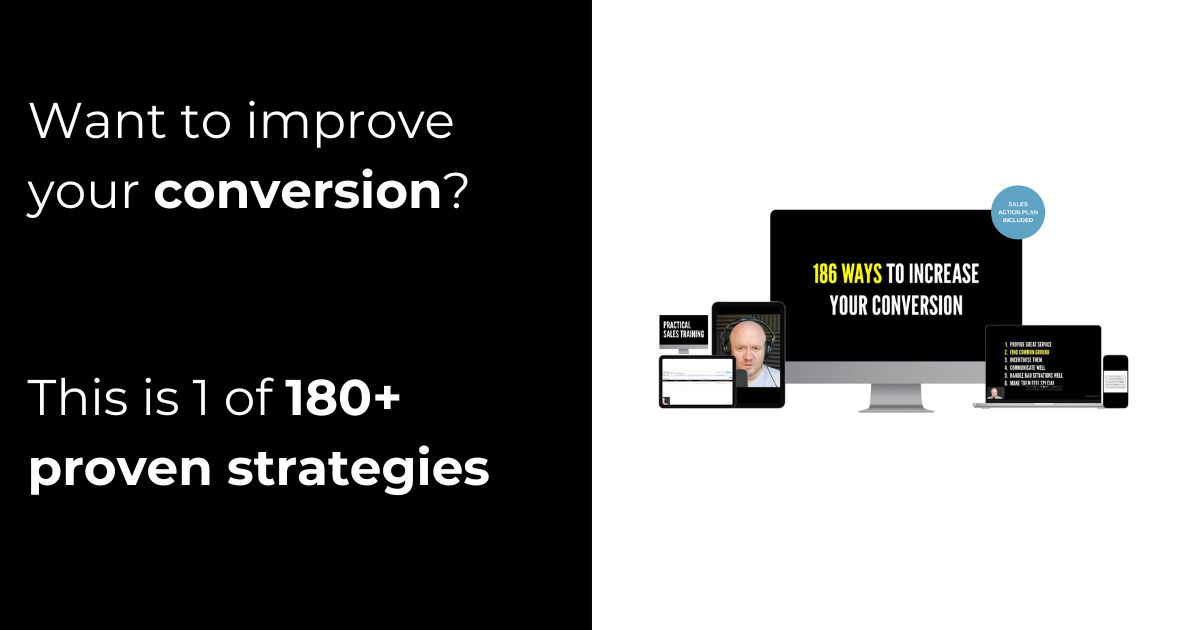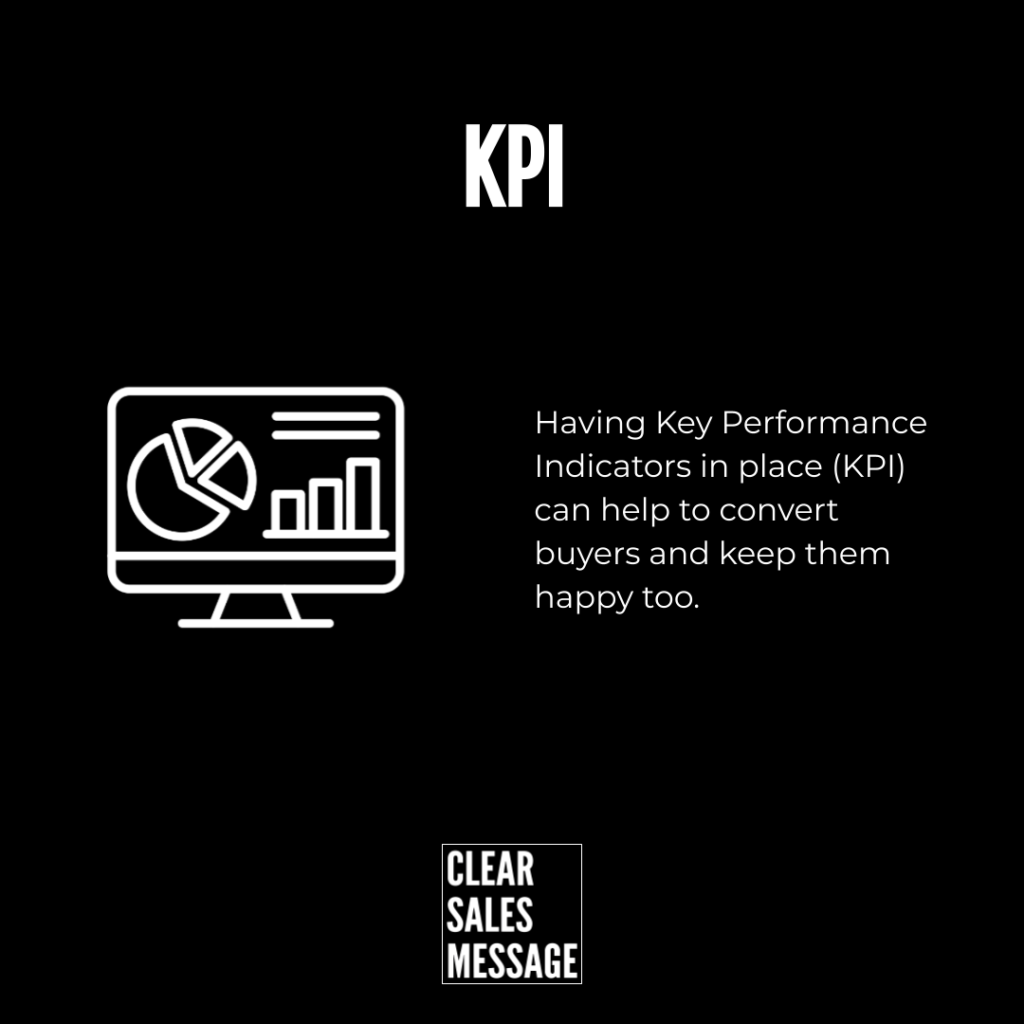Practical Sales Training™ > How To Convert > KPI
What is it?
A KPI or Key Performance Indicator is an agreed performance target that you set with your buyer. It ensures everyone focusses on the same thing and we know what “success” looks like.
Why does it work?
It works because it lays out, in no uncertain terms, PRECISELY what you are looking to achieve and eradicates any uncertainty. A KPI can be useful when reporting to clients so they can see progress – and not just once the KPI has been hit or missed.
How can you use it?
To make this work, you simply need to agree with your clients what the Key Performance Indicators are, what the timescale is and how you will track them. Don’t forget that if they do go off track, an emergency action plan is a great asset to have to hand.
Possible KPIs could include:
- increase in something
- decrease in something
- eradicating something
- creating something
- speeding something up
- slowing something down
- improving on previous performance by a % or fixed number
Hypothetical Example:
A digital marketing agency is hired by an e-commerce brand to run Facebook ad campaigns. Instead of vaguely promising “more sales,” they set a clear KPI:
“Our goal is to increase your website conversions by 20% over the next 90 days, while maintaining a cost-per-acquisition under £15.”
By defining precise metrics, both parties know exactly what success looks like. The agency also shares a monthly progress report, showing trends towards the KPI, which reassures the client that things are on track.
When results start to slip one month, the agency activates an emergency action plan (adjusting ad creatives and audiences) to bring performance back on track – demonstrating accountability.
See also:
- SLA – Service Level Agreement
- QER – Quantifiable End Result
- 100+ ways to differentiate
- 180+ ways to improve conversion



